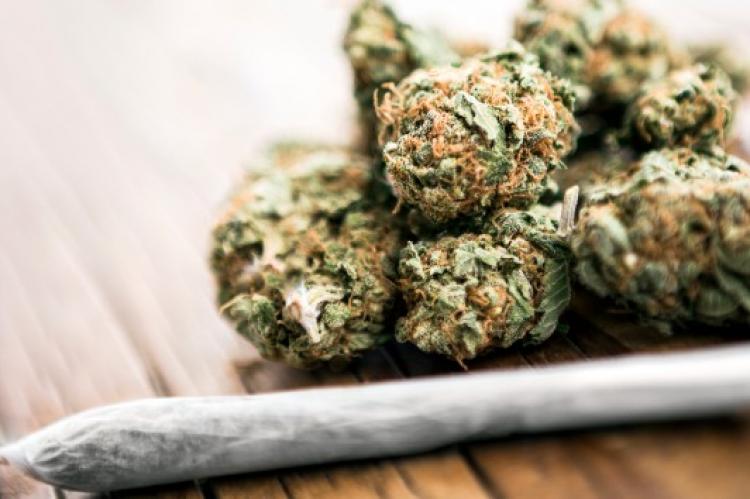Geographic Branding - Is Weed the New Wine?
Just as you might find a dry Chardonnay from Sonoma or a sweet Moscato from Italy, will a global market open the door for regional branding?
Terroir is the essence of a region distilled into a distinct expression of a plant. Wine, cacao, coffee, and tobacco are only a handful of examples of how the accumulation of soil, climate, terrain, and even the cultural landscape develops into a discernible essence of a final product. The push to document the terroir of cannabis is simply the next logical evolution of this idea, and one already well underway in California.
The push to protect the quintessential spirit of cannabis cultivation in California is the first of what will surely become a worldwide phenomenon. Cultivators have successfully pushed for Appellation of Origin protections for the Emerald Triangle and beyond. Perhaps inspired by the success of the Napa Valley Vineyards, these cultivators and advocates are banking on regional weed as the new wine.
CALIFORNIA PUSH FOR APPELLATIONS OF ORIGIN
Justin Calvino was one of the first advocates for the terroir and cultural significance of cannabis from the Emerald Triangle in California. This region encompassing Humboldt County, Trinity County, and Mendocino County, has one of the most established and robust cannabis cultivation traditions in the modern world. Long before the newest cannabis boom, these cultivators were dialed in and perfecting the craft.
Calvino launched a campaign in 2015 to document the dozens of unique microclimates and growing practices within the Emerald Triangle. Taking advice from winemakers, he worked closely with heritage cultivators. It took years, but he’s helped establish the terroir—the climate, watersheds, and other unique characteristics that make the harvests so unique.
His work, among scores of others, has led to the launch of the CalCannabis Appellations Project (as well as smaller regional pushes, like the Mendocino Appellations Project). In February 2020, California’s Department of Food and Agriculture finally released the proposed regulations for the new initiative of Appellations of Origin for the state’s robust cannabis market.
According to the release, “An appellation of origin is a protected designation that identifies the geographical origin of a product and how it was produced. CDFA’s Cannabis Appellations Program will promote regional cannabis products and local businesses, prevent the misrepresentation of a cannabis product’s origin, and support consumer confidence about a cannabis product’s origin and characteristics.”
The period for public comment closed in May, but current expectations predict the program will come into force by the beginning of 2021. This is the first region in the world to create real protections for regional nuances and heritage of cannabis cultivation.
IMPORTANT PROTECTIONS FOR GROWERS
The Californian market is already known for its excessive regulatory requirements. The introduction of the Appellation of Origins will inevitably become yet another layer of bureaucracy within this tangled network of oversight. However, this program, should cultivators seek to work within it, offers significant protection against an incredibly competitive market space.
First and foremost, Appellations protect the smaller farms, with a long tradition of cultivation in the region. The Emerald Triangle grows great bud, and with the investors seeing dollar signs, the entire area is at risk of getting bought up and commercialized by big-corporate growers. The growers dedicated to tending the soil, working through the unique challenges of the outdoor environment, and entrenched in that specific community can finally put a label on it, to protect that long term and often undefinable investment.
Much like within the wine, cacao, and coffee sectors, the “Made in” appellations label instantly elevates any product to which it is applied. People who seek out wines from Bordeaux and Napa do so because of the region’s terroir. Terroir (qualified by regulation) is a powerful branding tool. Even if craft growers struggle to compete with the larger industrial growers in some regards, this label suddenly gives them a competitive advantage.
Finally, just like this idea builds up the brand of the cultivator, recognized designations build up the region’s brand as well. It’s already expected that cannabis tourism will become just as legitimate as wine tourism, and terroir could become an essential aspect of this growing sector. An appellation of origin keeps profits local and creates immense economic opportunity for the community.
THINKING GLOBALLY: WHAT THE FUTURE HOLDS FOR CANNABIS APPELLATIONS
California serves as an inspiration for other cannabis markets. The most logical next step is for cultivators in British Columbia, Canada, to begin the push. “BC Bud” is arguably just as famous as flowers from the Emerald Triangle, and according to reports, there are already rumblings from Canadian cultivators about this potential.
But BC is just the tip of the iceberg when it comes to future recognition of cannabis tradition and terroir. Although it may take time for legalization to spread, there are already long-established cannabis-focused cultures from Morocco to the Hindu Valley and beyond, which are all worth protecting. Each of these regions has immense potential, as the next mecca of premium, culturally significant, production. Like other specialized crops, like wine and cacao, terroir is an unprecedented opportunity for cannabis farmers.
- Log in to post comments

